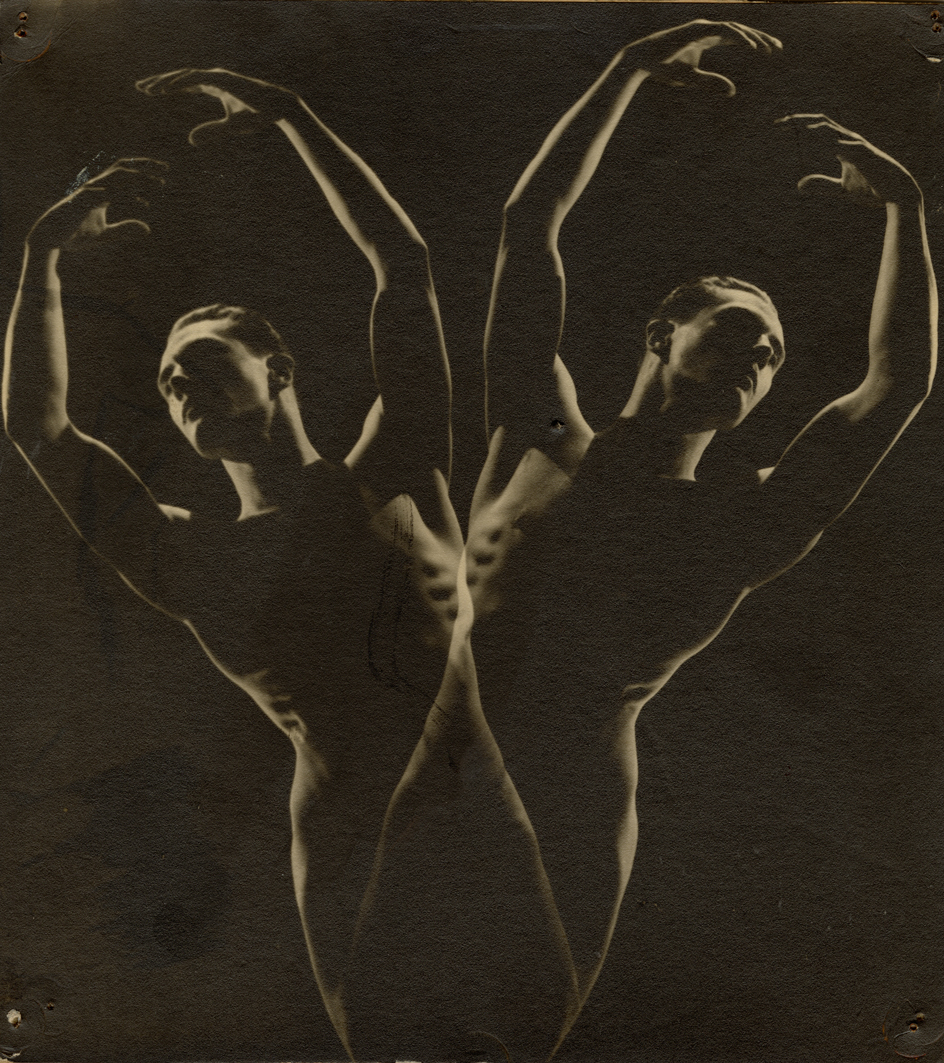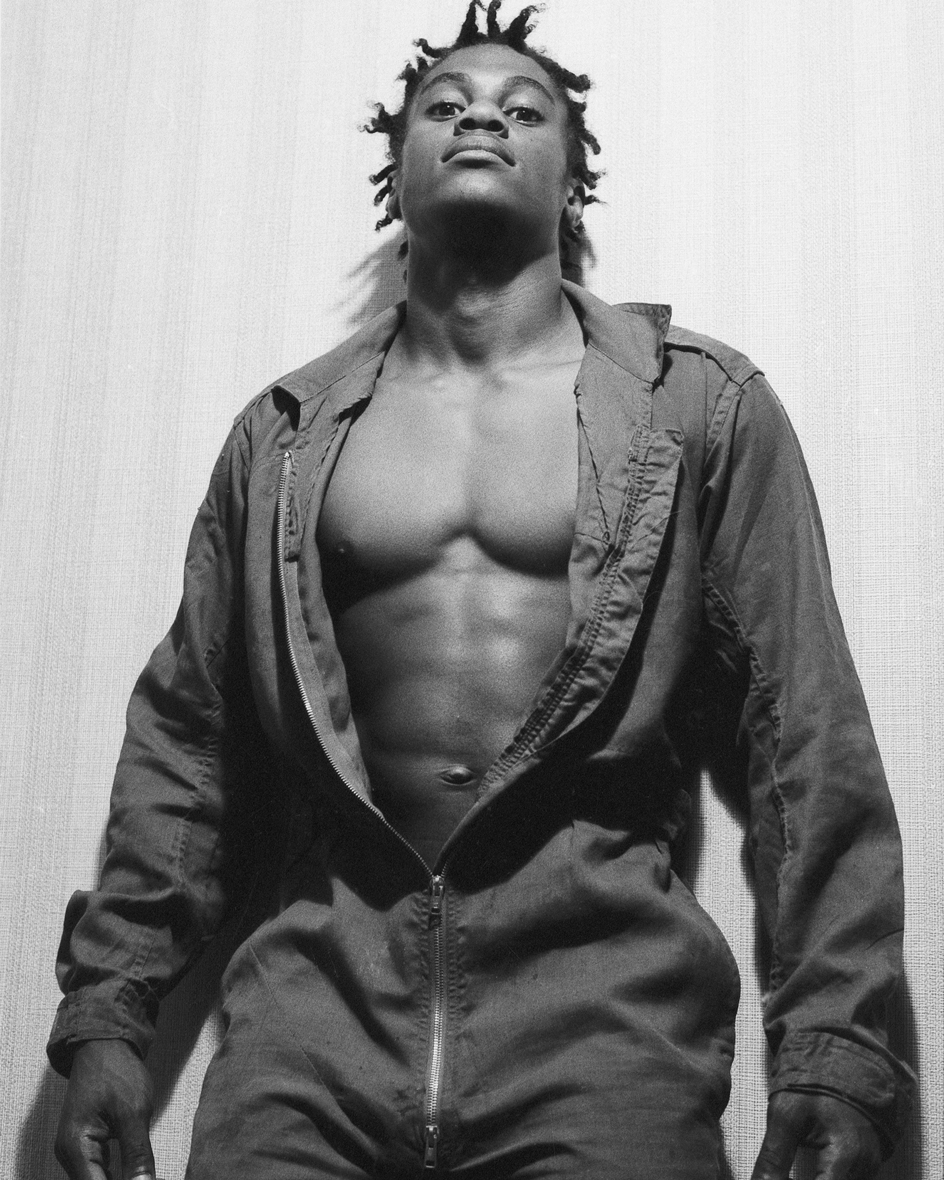London show celebrates the male physique in photography, from muscle hunks to scruffy punks
‘A Hard Man is Good to Find!’ – newly open at London’s Photographers’ Gallery – is a delectable survey of queer photographs of the male body created in London between the 1930s and early 1990s

At The Photographers’ Gallery, London, male-physique lovers can have their beefcake and eat it too. Dishing up more than a hundred photographs – in addition to magazines, personal albums and photo sheets – the exhibition ‘A Hard Man is Good to Find!’ is a feast for the eyes.
Titled after American actress Mae West’s famous quote, the exhibition spans 60 years of queer image-making, from svelte bathers to muscle hunks and scruffy punks. It is divided into half a dozen sections, which map out subcultural territories of the British capital, from Hampstead Heath to Portobello and Euston.
‘In the early part of the 20th century, homosexuality was illegal,’ the exhibition curator Alistair O’Neill notes as we walk through the gallery’s baby-pink walls. Despite the 1955 Wolfenden Report – which recommended the depenalisation of homosexual acts between consenting adults – and the subsequent 1967 Sexual Offences Act – which marked the partial decriminalisation of gay sex – Britain’s obscenity laws remained a considerable obstacle for the production of homoerotic imagery. ‘Representations of the male nude came under considerable scrutiny and the ability for queer men to look at other men in states of undress was fairly limited,’ continues O’Neill, who teaches Fashion History and Theory at London’s Central Saint Martins.

Angus McBean, David Dulak, 1946
The exhibition starts strongly with a rarely seen collage series by British painter Keith Vaughan, dated from 1933. It features cut-out photographs of thong-wearing sunbathers taken by the then-21-year-old artist at Highgate Men’s Pond. Superposed with textual elements over monochromatic olive-green backgrounds, the images are compiled in a diary-style photobook that is on display behind a glass cabinet, while enlarged prints of individual pages are reproduced on a wall.
‘He’d just purchased a Leica camera and turned his bedroom in his mother’s house in West Hampstead into his dark room,’ O’Neill recounts. ‘He wouldn’t have been able to print these commercially because of the nature of the images.’ At once scenic and suggestive, they play with contrast and repetition in remarkably modernist ways that prefigure elements of Richard Hamilton’s early Pop Art. Interestingly, the presence of jockstraps in the photographs suggests that the famed undergarment did not become a gay symbol in 1950s America with the advent of magazines such as Physique Pictorial, as is often assumed. (For fans of the latter, a rare posing pouch lovingly crafted by its publisher Bob Mizer’s mother is on display in the adjacent annexe room.)

Basil Clavering, (Royale, Hussar, Dolphin). Mail order Storyette print, late 1950s
It’s not all about sex: many works in the show are imbued with an irresistible camp quality, too. Chief among them, the 1950s ‘storyettes’ – catalogue photo sheets assembled into a narrative – demonstrate their makers’ imaginative use of humour. Conceived to discreetly advertise erotic prints to order by mail, storyettes were initiated by sailor-turned-cinema owner Basil Clavering from his basement studio in Pimlico. To avoid scrutiny, Clavering assembled the images like film stills, orchestrating comical scenarios in which military men are seen progressively undressing, flexing their muscles in front of a mirror and eventually ironing each other’s uniforms in the nude. ‘It’s kind of seaside postcard humour,’ O’Neill laughs, ‘or like a drag pantomime.’
At times, the exhibition’s desire to illustrate one community’s efforts to produce and circulate radical images eclipses critical issues such as consent and exploitation. For instance, 1930s erotic images of working-class guardsmen exchanging sex and consumerist pleasures for money; street and intimate portraits of 1980s punks catfished in the streets of King’s Cross under the pretence of a false Vogue campaign, and lists of models’ names categorised by race all point to complex power dynamics that the show does little to address or contextualise.
Wallpaper* Newsletter
Receive our daily digest of inspiration, escapism and design stories from around the world direct to your inbox.

Martin Spenceley, 1980s
Thankfully, the final display brings some much-needed nuance to this narrative with a glimpse into the Brixton Art Gallery’s development. Opened in 1983 under a railway arch, it was run by an artist collective including the likes of Ajamu X, Franko B and Guy Burch, whose queer and intersectional work was largely excluded from mainstream exhibition spaces. One arresting portrait by the late Nigerian photographer Rotimi Fani-Kayode – a prominent figure of the Black British Art scene and founding member of the activist art organisation Autograph – shows a Black nude model gazing at the camera through a Venetian long nose mask, his genitals covered in gold paint. Titled The Golden Phallus, the work was made in 1989 to address colonial stereotypes in the climate of the Aids crisis, namely Robert Mapplethorpe’s fetishist depiction of Black male nudes.
‘A Hard Man is Good to Find!’ is a delectable show that compellingly traces the proliferation of an otherwise undermined visual subculture. Enjoy it while it’s hot.
‘A Hard Man is Good to Find!’, until 11 June 2023, The Photographers' Gallery, London. thephotographersgallery.org.uk
-
 Extreme Cashmere reimagines retail with its new Amsterdam store: ‘You want to take your shoes off and stay’
Extreme Cashmere reimagines retail with its new Amsterdam store: ‘You want to take your shoes off and stay’Wallpaper* takes a tour of Extreme Cashmere’s new Amsterdam store, a space which reflects the label’s famed hospitality and unconventional approach to knitwear
By Jack Moss
-
 Titanium watches are strong, light and enduring: here are some of the best
Titanium watches are strong, light and enduring: here are some of the bestBrands including Bremont, Christopher Ward and Grand Seiko are exploring the possibilities of titanium watches
By Chris Hall
-
 Warp Records announces its first event in over a decade at the Barbican
Warp Records announces its first event in over a decade at the Barbican‘A Warp Happening,' landing 14 June, is guaranteed to be an epic day out
By Tianna Williams
-
 The UK AIDS Memorial Quilt will be shown at Tate Modern
The UK AIDS Memorial Quilt will be shown at Tate ModernThe 42-panel quilt, which commemorates those affected by HIV and AIDS, will be displayed in Tate Modern’s Turbine Hall in June 2025
By Anna Solomon
-
 ‘Humour is foundational’: artist Ella Kruglyanskaya on painting as a ‘highly questionable’ pursuit
‘Humour is foundational’: artist Ella Kruglyanskaya on painting as a ‘highly questionable’ pursuitElla Kruglyanskaya’s exhibition, ‘Shadows’ at Thomas Dane Gallery, is the first in a series of three this year, with openings in Basel and New York to follow
By Hannah Silver
-
 Artist Qualeasha Wood explores the digital glitch to weave stories of the Black female experience
Artist Qualeasha Wood explores the digital glitch to weave stories of the Black female experienceIn ‘Malware’, her new London exhibition at Pippy Houldsworth Gallery, the American artist’s tapestries, tuftings and videos delve into the world of internet malfunction
By Hannah Silver
-
 Ed Atkins confronts death at Tate Britain
Ed Atkins confronts death at Tate BritainIn his new London exhibition, the artist prods at the limits of existence through digital and physical works, including a film starring Toby Jones
By Emily Steer
-
 Tom Wesselmann’s 'Up Close' and the anatomy of desire
Tom Wesselmann’s 'Up Close' and the anatomy of desireIn a new exhibition currently on show at Almine Rech in London, Tom Wesselmann challenges the limits of figurative painting
By Sam Moore
-
 A major Frida Kahlo exhibition is coming to the Tate Modern next year
A major Frida Kahlo exhibition is coming to the Tate Modern next yearTate’s 2026 programme includes 'Frida: The Making of an Icon', which will trace the professional and personal life of countercultural figurehead Frida Kahlo
By Anna Solomon
-
 A portrait of the artist: Sotheby’s puts Grayson Perry in the spotlight
A portrait of the artist: Sotheby’s puts Grayson Perry in the spotlightFor more than a decade, photographer Richard Ansett has made Grayson Perry his muse. Now Sotheby’s is staging a selling exhibition of their work
By Hannah Silver
-
 Celia Paul's colony of ghostly apparitions haunts Victoria Miro
Celia Paul's colony of ghostly apparitions haunts Victoria MiroEerie and elegiac new London exhibition ‘Celia Paul: Colony of Ghosts’ is on show at Victoria Miro until 17 April
By Hannah Hutchings-Georgiou